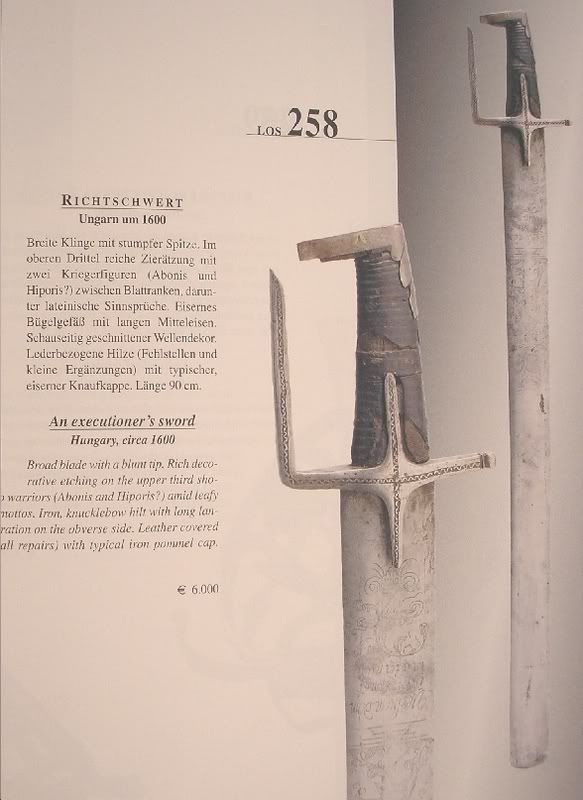
 |
|
|
|
|
#1 |
|
Member
Join Date: Oct 2006
Posts: 62
|
[QUOTE=Bill]I agree this is a unplesant subject but I think there is value in how some swords did develope for this matter. QUOTE]
Exactly. People only find it disturbing because it still goes on today. I was actually interested in the kind of metal used. It is a good way for me to understand metal types used in swords. For example i know that most "samurai" swords would be softer in the middle and harder on the edges therefore creating a hard edged sword that was not too brittle etc etc. Therefore I presume an executioners sword would be very brittle as a good edge would be the most important attribute. Sharpness I presume would be the most important priority as it would not be colliding with something as hard as an enemy shield or parrying sword etc etc. I think learning about how swords are designed and made for certain puroposes can teach the beginer like myself an awful lot about swords. Lets face it what percentage of swords were really designed to do anything nice to another human being ? yeah a few just for ceremonial purposes, but then again we just have ceremonial swords because swords represent power (power through the ability to take life). Yeah sure i don't want to see real executions no thanks (yuk) not my cup of tea but discussing how they (the swords) are made can lead to great learning. So what steel would be the best then ? High carbon ? or what ? How are they made ? No one really answered that. If you were a sword smith and some rich shiek a few hundred years ago said make an executioners sword. Would that be different to a battle sword ? How would it be different etc etc. I think it is a decent academic question  And of great value to the beginer like myself. And of great value to the beginer like myself.Kind of like the physics question to students of physics. The teacher asked them how would they make a nuclear bomb. Nuclear bombs are far worse than executioners swords, but it was a useful way to teach the physics students about physics. However I guess there is something in our memes that makes us more terrified and repulsed by swords than atomic bombs. 
|
|
|

|
|
|
#2 |
|
Member
Join Date: Dec 2004
Location: Santa Barbara, California
Posts: 301
|
Which is a very slanted blade, I would say that a panabas might be the most efficient.
Heavy, well-tempered blade. short cutting edge, abrupt slant; sounds very effective, if not the best in a fighting situation. In some countries, practicing decapitation on live criminals was the norm for young warriors; the actual experience was believed to be vital (!). Other countries and ethnic groups used animals to get the feel. Sort of like a round of golf; practice, anyone? Just don't start enjoying it and lose your head over it. (Sorry, couldn't resist) |
|
|

|
|
|
#3 |
|
Member
Join Date: Jan 2006
Location: Kent
Posts: 2,658
|
I suppose the requirements of a 'good' be-heading sword would include a two handed hilt. A 'heavy' blade, carbon steel with a 'v' edge and 'clipped point' The sword's balance would need to be 'top heavy' to aid the downward stroke. Axes were the norm. in Britain's earlier history....and a sword, such as I described above, would have 'axe-like' qualities. The advantage over the axe is the fact that with an axe,the weight is 'concentrated' at one end and it would be easy not to strike cleanly

|
|
|

|
|
|
#4 |
|
Member
Join Date: Sep 2006
Location: McDonough, GA
Posts: 48
|
Pictures of a few beheading swords from around the world:
Sorry if this seems a little out of order, I'm exhausted, but I'll try and clean it up when I get the chance. 
|
|
|

|
|
|
#5 |
|
(deceased)
Join Date: Dec 2004
Location: Portugal
Posts: 9,694
|
An impressive German specimen of the 16th century.
blade length 925 m/m= 36 1/2" blade width 90 m/m= 3 1/2" |
|
|

|
 |
|
|